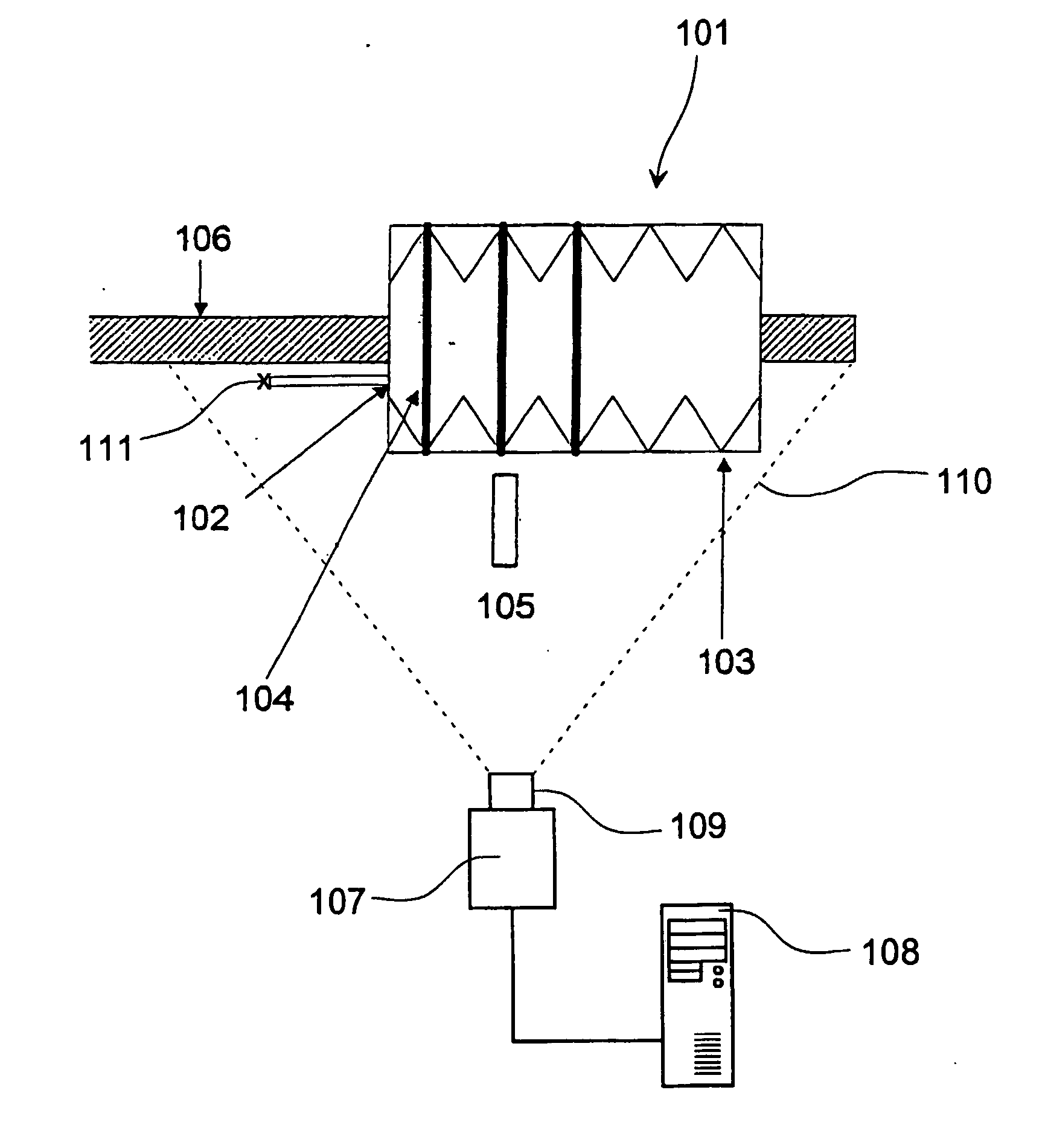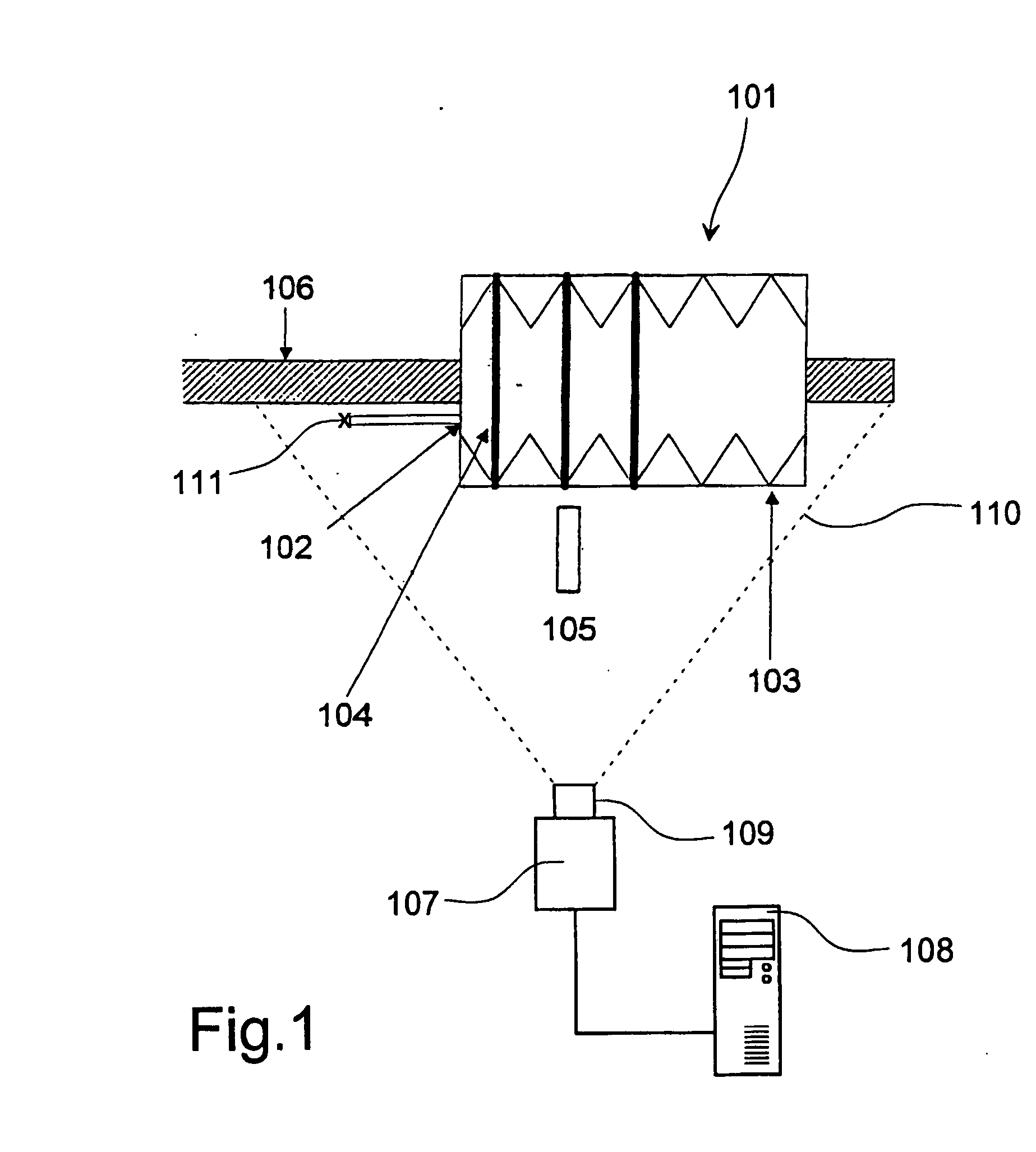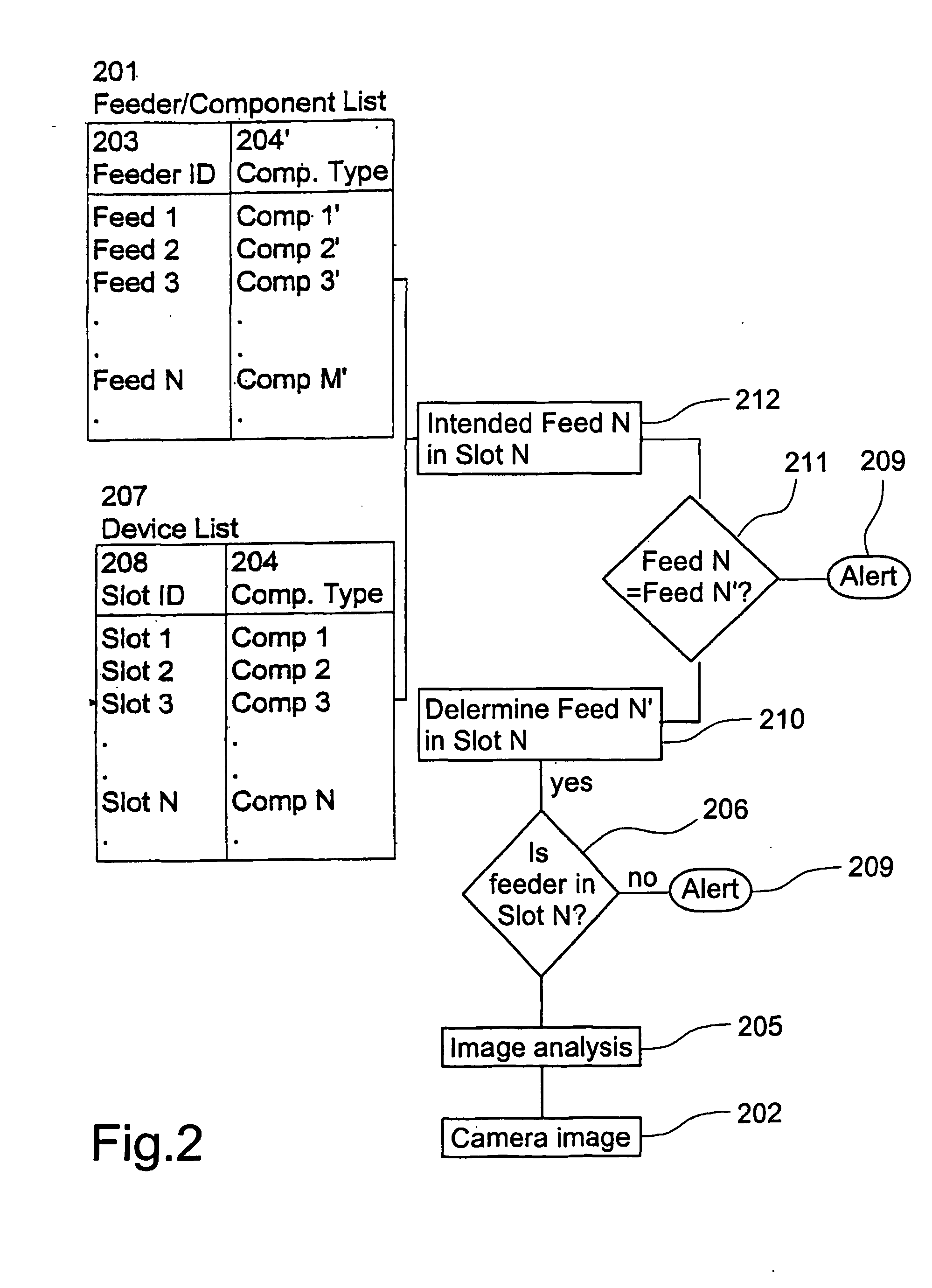Feeder verification with a camera
a technology of camera and feeder, applied in the field of feeder verification with a camera, can solve the problems of high probability of component loading error, high number of defective printed circuit boards, and error in the placement of components on the board, and achieve the effect of simple procedure, safe and fas
- Summary
- Abstract
- Description
- Claims
- Application Information
AI Technical Summary
Benefits of technology
Problems solved by technology
Method used
Image
Examples
Embodiment Construction
[0047] In FIG. 1, a placement machine 101 is illustrated having a platform 102, on which a number of slots 103 are located. Into each slot 103, a feeder 104 may be placed. Certain feeder 104 types may extend into several slots 103. The platform 102 is displaced relatively to the component pick up arm 105 for picking up components from different slots 103. Alternatively, the pick up arm 105 may be displaced with respect to the platform 102.
[0048] Each feeder 104 is provided with an identification marker, feeder ID, for example a bar code label that is designed to be readable by an appropriate scanner. According to the invention, the feeder ID is imaged by a camera 107 and analyzed in a computer 108 by an image analysis computer program. By using a camera 107 according to the invention, the feeder marker may be different from a bar-code and may contain additional information about the feeder, and eventually information about the contained type of components.
[0049] The camera 107 ima...
PUM
 Login to View More
Login to View More Abstract
Description
Claims
Application Information
 Login to View More
Login to View More - R&D
- Intellectual Property
- Life Sciences
- Materials
- Tech Scout
- Unparalleled Data Quality
- Higher Quality Content
- 60% Fewer Hallucinations
Browse by: Latest US Patents, China's latest patents, Technical Efficacy Thesaurus, Application Domain, Technology Topic, Popular Technical Reports.
© 2025 PatSnap. All rights reserved.Legal|Privacy policy|Modern Slavery Act Transparency Statement|Sitemap|About US| Contact US: help@patsnap.com



